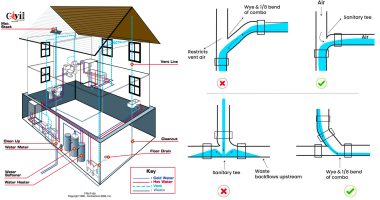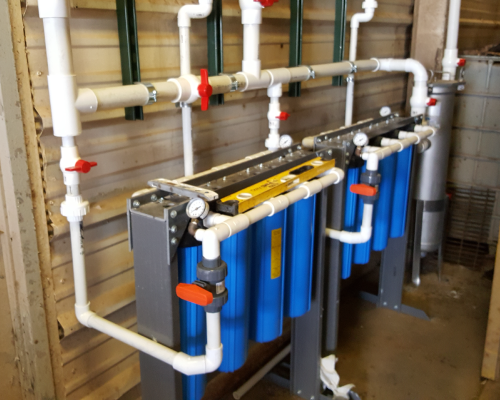The writer is making several great pointers related to Exploring Your Homes Plumbing Anatomy in general in this post underneath.

Recognizing just how your home's pipes system works is important for each house owner. From supplying tidy water for drinking, cooking, and showering to securely removing wastewater, a well-maintained plumbing system is crucial for your family members's wellness and comfort. In this thorough overview, we'll discover the detailed network that composes your home's pipes and deal pointers on upkeep, upgrades, and taking care of typical problems.
Intro
Your home's pipes system is greater than simply a network of pipes; it's a complex system that guarantees you have accessibility to tidy water and effective wastewater elimination. Understanding its components and how they work together can help you prevent costly repairs and ensure every little thing runs efficiently.
Standard Elements of a Plumbing System
Pipelines and Tubes
At the heart of your plumbing system are the pipelines and tubes that bring water throughout your home. These can be made from different products such as copper, PVC, or PEX, each with its advantages in regards to sturdiness and cost-effectiveness.
Fixtures: Sinks, Toilets, Showers, and so on.
Components like sinks, toilets, showers, and tubs are where water is made use of in your home. Understanding just how these components link to the plumbing system helps in detecting issues and intending upgrades.
Shutoffs and Shut-off Points
Valves regulate the circulation of water in your plumbing system. Shut-off valves are critical throughout emergencies or when you need to make repairs, permitting you to separate parts of the system without disrupting water circulation to the whole home.
Water System
Key Water Line
The main water line links your home to the community water or a personal well. It's where water enters your home and is distributed to numerous components.
Water Meter and Pressure Regulatory Authority
The water meter measures your water use, while a pressure regulatory authority guarantees that water flows at a secure stress throughout your home's pipes system, stopping damage to pipelines and fixtures.
Cold Water vs. Hot Water Lines
Recognizing the distinction in between cold water lines, which supply water straight from the primary, and hot water lines, which bring heated water from the hot water heater, helps in repairing and preparing for upgrades.
Drainage System
Drain Pipes Pipeline and Traps
Drain pipelines bring wastewater away from sinks, showers, and bathrooms to the sewer or septic system. Catches avoid sewer gases from entering your home and additionally catch debris that can trigger blockages.
Ventilation Pipelines
Ventilation pipes permit air into the drainage system, stopping suction that might slow water drainage and trigger catches to vacant. Proper air flow is vital for maintaining the stability of your plumbing system.
Significance of Correct Drain
Ensuring appropriate water drainage stops backups and water damages. Frequently cleaning drains pipes and maintaining catches can prevent pricey repair work and prolong the life of your pipes system.
Water Heater
Types of Hot Water Heater
Water heaters can be tankless or standard tank-style. Tankless heating systems heat water as needed, while tanks save heated water for instant use.
Exactly How Water Heaters Attach to the Plumbing System
Recognizing how hot water heater attach to both the cold water supply and warm water circulation lines aids in detecting concerns like not enough warm water or leakages.
Maintenance Tips for Water Heaters
Consistently purging your hot water heater to remove sediment, inspecting the temperature level setups, and evaluating for leakages can expand its life-span and improve energy performance.
Common Plumbing Concerns
Leakages and Their Reasons
Leaks can occur because of aging pipelines, loosened installations, or high water stress. Resolving leakages without delay protects against water damages and mold and mildew development.
Clogs and Blockages
Clogs in drains and toilets are frequently triggered by flushing non-flushable items or a buildup of grease and hair. Using drain displays and bearing in mind what decreases your drains can avoid blockages.
Indications of Plumbing Problems to Watch For
Low water pressure, slow-moving drains pipes, foul odors, or abnormally high water costs are indicators of prospective plumbing problems that should be addressed promptly.
Pipes Upkeep Tips
Normal Assessments and Checks
Arrange annual plumbing inspections to capture concerns early. Try to find indications of leaks, corrosion, or mineral buildup in taps and showerheads.
Do It Yourself Upkeep Tasks
Easy tasks like cleansing tap aerators, looking for bathroom leaks making use of color tablet computers, or protecting exposed pipelines in cool climates can prevent major pipes problems.
When to Call a Professional Plumber
Know when a pipes concern needs professional know-how. Attempting intricate repair services without proper expertise can cause more damage and greater repair work costs.
Updating Your Plumbing System
Factors for Updating
Upgrading to water-efficient components or replacing old pipelines can enhance water quality, lower water expenses, and increase the worth of your home.
Modern Plumbing Technologies and Their Benefits
Discover innovations like smart leakage detectors, water-saving bathrooms, and energy-efficient hot water heater that can save cash and decrease ecological impact.
Price Considerations and ROI
Compute the in advance costs versus long-lasting savings when taking into consideration pipes upgrades. Lots of upgrades spend for themselves with reduced energy bills and less repairs.
Ecological Impact and Preservation
Water-Saving Fixtures and Home Appliances
Installing low-flow taps, showerheads, and toilets can substantially reduce water usage without giving up performance.
Tips for Lowering Water Usage
Basic habits like taking care of leakages promptly, taking shorter showers, and running complete loads of washing and recipes can save water and reduced your utility expenses.
Eco-Friendly Pipes Options
Consider sustainable pipes materials like bamboo for flooring, which is durable and green, or recycled glass for kitchen counters.
Emergency situation Preparedness
Steps to Take Throughout a Plumbing Emergency situation
Know where your shut-off valves lie and how to switch off the supply of water in case of a ruptured pipe or significant leak.
Value of Having Emergency Get In Touches With Handy
Maintain get in touch with details for local plumbing professionals or emergency services conveniently available for fast response during a pipes crisis.
Do It Yourself Emergency Situation Fixes (When Appropriate).
Short-term solutions like using air duct tape to spot a leaking pipe or putting a pail under a dripping tap can decrease damage up until an expert plumbing professional arrives.
Final thought.
Recognizing the anatomy of your home's plumbing system equips you to keep it effectively, conserving money and time on repairs. By following regular maintenance regimens and remaining informed regarding contemporary pipes technologies, you can ensure your plumbing system runs successfully for years to come.
Understanding Your Home Plumbing System: A Comprehensive Guide
Plumbing System: The Lifeline of Your Home
At its core, the plumbing system is designed to perform two primary functions: bring fresh water into your home and remove wastewater. The system is a network of pipes, fixtures, and other components that transport water and sewage. Residential plumbing systems include potable water supply lines, drain-waste-vent (DWV) systems, and various plumbing fixtures that make water use in daily tasks possible.
Key Components:
Water Supply: This part of your plumbing system brings municipal water into your home, passing through the main water supply line. It s responsible for supplying all water needs, from drinking to bathing.
Drainage System: It carries waste and water away from your home to the sewer or septic system. This system includes all the piping within your home that leads to external sewage or septic systems.
Vent System: An essential yet often overlooked component, the vent system allows sewer gases to escape and lets air into the drainpipes, ensuring water and waste move correctly through the system.
Fixture: More Than Just Taps and Toilets
Plumbing fixtures are the most interactive parts of the plumbing system, including faucets, showers, toilets, and sinks. Each fixture is connected to the plumbing system and plays a role in either the delivery of freshwater or the disposal of waste and wastewater.
Types of Fixtures:
Faucets and Sinks: Used for washing hands, dishes, and other daily water needs.
Toilets: Dispose of human waste through the sewage system.
Bathtubs and Showers: Provide bathing facilities, requiring both hot and cold water supply.
Water Supply: The Source of Life
The water supply system is a critical component, ensuring that potable water is available throughout your home for various uses, including drinking, cooking, and cleaning. This system consists of pipes that distribute water to different parts of the house, controlled by valves to regulate the water flow.
Types of Plumbing: Materials and Methods
Various types of plumbing systems and materials are used in residential settings, each with its advantages and applications. From copper and PVC pipes for water supply to cast iron and ABS for drainage, the choice of materials can impact the longevity and efficiency of your plumbing system.
https://intownplumbingtx.com/articles/home-plumbing-system-guide/

Understanding Your Home Plumbing System: A Comprehensive Guide
Plumbing System: The Lifeline of Your Home
At its core, the plumbing system is designed to perform two primary functions: bring fresh water into your home and remove wastewater. The system is a network of pipes, fixtures, and other components that transport water and sewage. Residential plumbing systems include potable water supply lines, drain-waste-vent (DWV) systems, and various plumbing fixtures that make water use in daily tasks possible.
Key Components:
Water Supply: This part of your plumbing system brings municipal water into your home, passing through the main water supply line. It s responsible for supplying all water needs, from drinking to bathing.
Drainage System: It carries waste and water away from your home to the sewer or septic system. This system includes all the piping within your home that leads to external sewage or septic systems.
Vent System: An essential yet often overlooked component, the vent system allows sewer gases to escape and lets air into the drainpipes, ensuring water and waste move correctly through the system.
Fixture: More Than Just Taps and Toilets
Plumbing fixtures are the most interactive parts of the plumbing system, including faucets, showers, toilets, and sinks. Each fixture is connected to the plumbing system and plays a role in either the delivery of freshwater or the disposal of waste and wastewater.
Types of Fixtures:
Water Supply: The Source of Life
The water supply system is a critical component, ensuring that potable water is available throughout your home for various uses, including drinking, cooking, and cleaning. This system consists of pipes that distribute water to different parts of the house, controlled by valves to regulate the water flow.
Types of Plumbing: Materials and Methods
Various types of plumbing systems and materials are used in residential settings, each with its advantages and applications. From copper and PVC pipes for water supply to cast iron and ABS for drainage, the choice of materials can impact the longevity and efficiency of your plumbing system.
https://intownplumbingtx.com/articles/home-plumbing-system-guide/
I'm just very focused on and I am praying you enjoyed reading the page. Are you aware of anybody else who is fascinated about the topic? Feel free to promote it. I value reading our article about Exploring Your Homes Plumbing Anatomy.
Visit Link